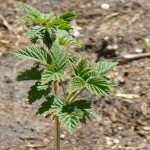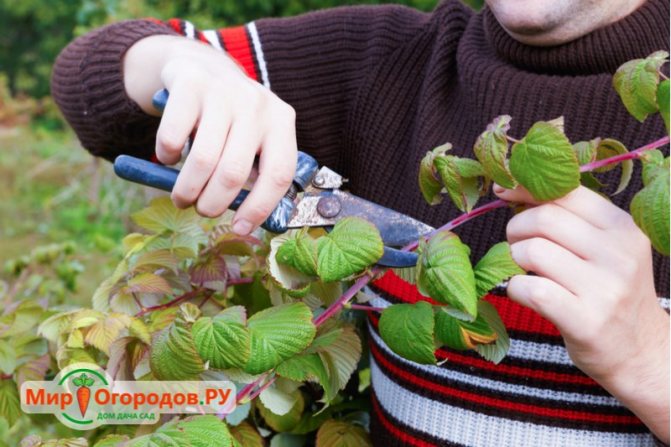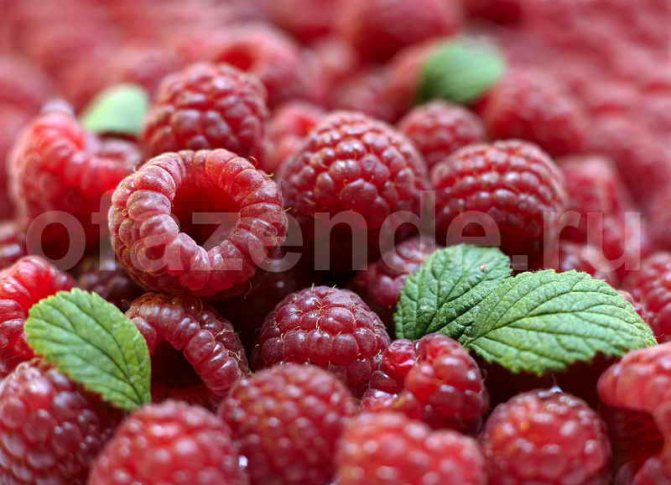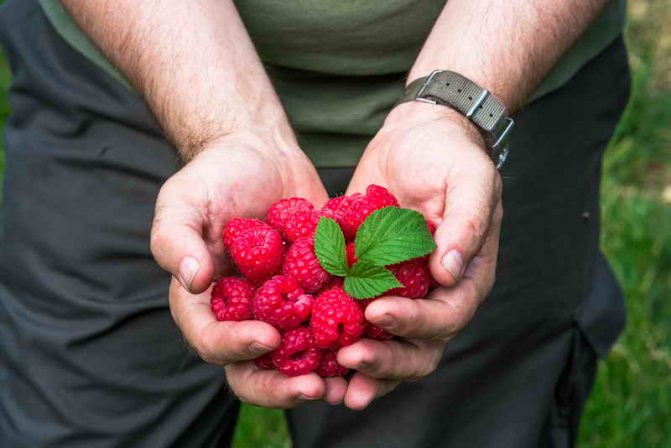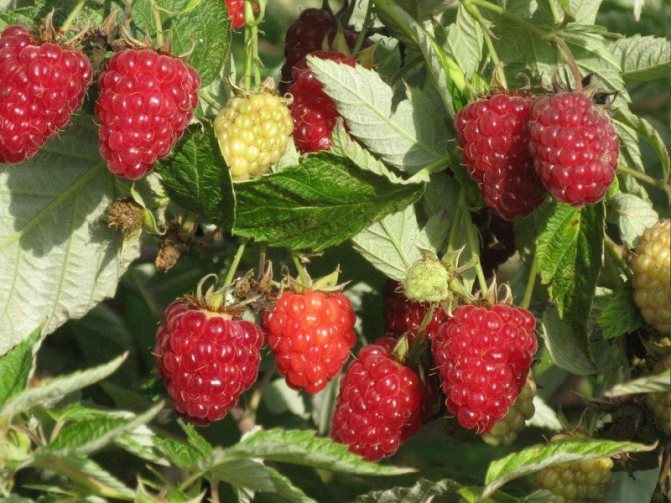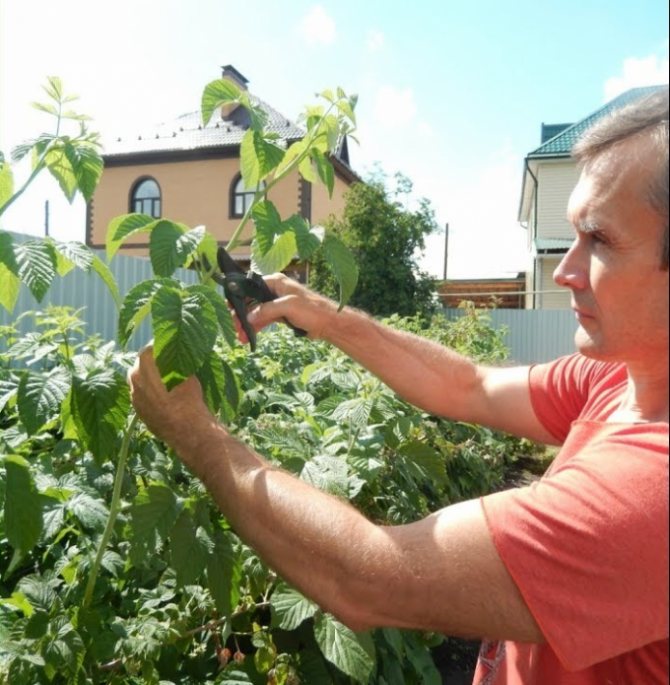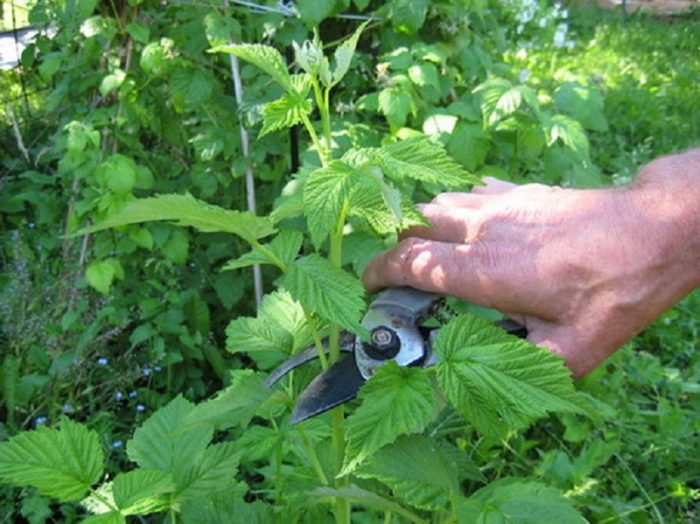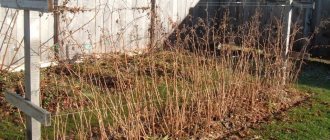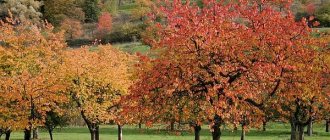The need for pruning raspberries according to Sobolev
If you do not trim the raspberries, the consequences can be extremely negative:
- active development of greenery - leaves and shoots, which will "pull" all the nutrients, preventing the formation and ripening of fruits;
- thickening of the branches, due to which the plant will not receive enough sunlight and fresh air;
- young shoots without pruning old branches will experience an acute shortage of nutrients, due to which their frost resistance decreases and in winter they may die;
- the more thickets, the higher the risks of fungus and mold development on the branches, the occurrence of a number of diseases, which can lead to the death of the bush.
To grow an actively fruiting raspberry bush, it must be pruned regularly.

Sobolev's technique is quite simple, and the effectiveness is maximum
Additional Information! In addition to increasing yields, pruning rejuvenates the plant, increases its immunity, makes it strong against diseases and pests.
Spring pruning of remontant raspberries
Repaired varieties have earlier fruiting than regular raspberry varieties. The pruning technology of such bushes does not have any special differences. However, there are small features of pruning remontant varieties of raspberries.
Timing
Young stems of remontant raspberries begin to bloom in July and can be harvested in August. For regular fruiting, you need to prune after picking the berries.
It is not recommended to leave the annual shoots of the bushes. They should be trimmed to 3cm stumps. Such a procedure should be carried out in October or November, since it is during these months that the plants are in the stage of vegetative calm.
In the spring, the sanitization of plants will be sufficient. You only need to cut off shoots that are dry or frozen out during the winter.
Important! Raspberry pruning in spring should be done on the first healthy bud.
The procedure is carried out in April, when the kidneys are swollen, and it is easy to determine which kidney is damaged and which is healthy. Around May, you need to pinch the top of the shoots near the bush so that fruiting is longer.
Technics
In the northern regions, freezing of raspberry bushes often occurs in winter. Therefore, the optimal time for pruning is autumn. The nutrients that remain in the branches will help build up in the root system. In addition, the stems hold snow well over the plants. That is why in the spring you need to carefully examine the bush and remove all damaged and weakened branches.
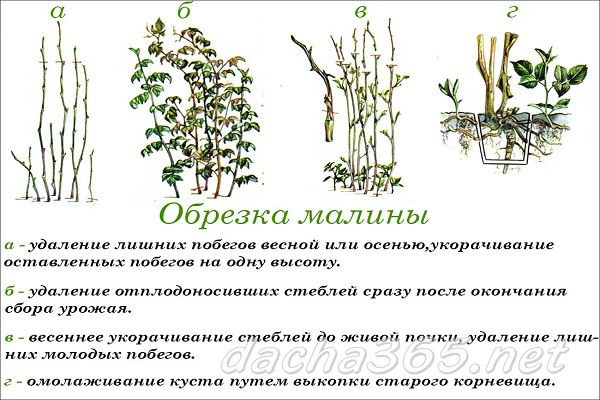

But it is important to say about the lack of spring pruning. Often, under the bark of branches there can be larvae of pests or pathogens. To avoid pest infestation, raspberry bushes in the fall should be treated with a 1% solution of ferrous sulfate.In the spring, for preventive purposes, make the spraying procedure with special preparations, such as Topaz or Radomil. The optimal period for spraying is early May.
At the end of May, plants need to be treated in order to combat parasitic insects. Preparations are ideal for this:
- Aktofit;
- "Lepidocide".
Raspberry pruning according to Sobolev: all the pros and cons
The advantages of cutting raspberries according to Sobolev look like this:
- significant increase in fruiting;
- ease of execution;
- high efficiency.


Sobolev's method gives the raspberry bush a second wind
Disadvantages:
- fast thickening of shrubs;
- the appearance of root growth;
- the need to increase the nutritional value of the soil.
Sobolev's technique, despite the fact that it gives an excellent result, is applicable only to well-groomed bushes. It makes no sense to cut the raspberry trees that have been launched in this way, since it will not give any result.
Additional Information! The disadvantage of Sobolev's method is that it is not suitable for all varieties of raspberries.
First cut
In the spring, raspberries require feeding with nitrogenous fertilizers, which are rich in manure. After their introduction, the bushes need to be mulched again. Sawdust does not allow trampling the ground, does not allow it to dry out and is a top dressing. For spring mulching good straw, manure with a high content of straw, seed husks, cut grass. The mulch is laid in a layer 5-7 cm thick.
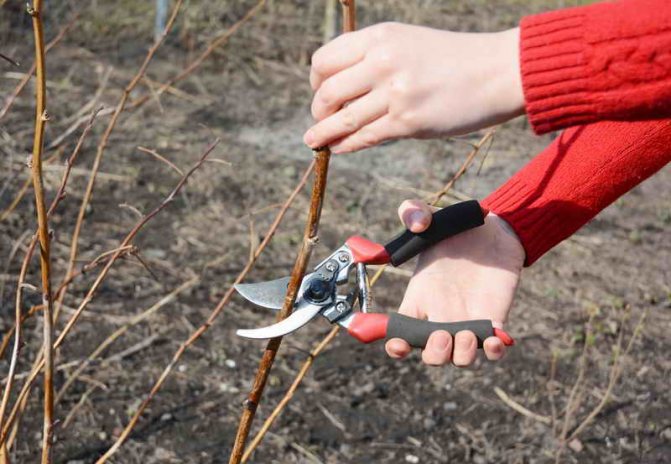

Pruning raspberries. Illustration for this article is used under a standard license.
At the end of May or at the beginning of June, the first pruning of the bushes should be done. It is necessary to shorten the tops of the raspberries by 10-20 cm, taking into account its variety and height. Sometimes you have to trim more.
Step-by-step instructions for pruning according to Sobolev
Sobolev's method is feasible only on those bushes on which fruits have begun to form, and where the branches have reached a height of 1 m. Young, recently planted bushes do not need pruning. They must first be given time to grow stronger.
First stage
You can start the procedure when the branches reach a height of 1 m, and for low and medium-sized bushes, the optimal height will be from 60 to 70 cm.The first stage activates the awakening of lateral buds, which will begin to develop rapidly and young shoots will form from them.
- The upper bud and part of the shoot are cut off, shortening by 8-10 cm.
- Throughout the summer period, it is necessary to regularly check how the bush is formed. Annual branches should get stronger, each should have up to 5 new side branches.
- If a lot of root growth has formed, it must be cut out, or transplanted, if the characteristic of the variety allows it. Weak or damaged growth must be removed.
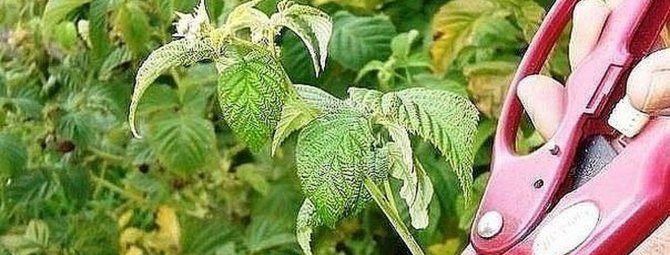

The purpose of the procedure is not only to increase fruiting, but also to completely renew the raspberries
If you do not remove the root shoots, it will begin to suppress the main shoots, depriving them of nutrients. The bush will begin to weaken, which will lead to the development of diseases.
How to properly prune remontant raspberries?
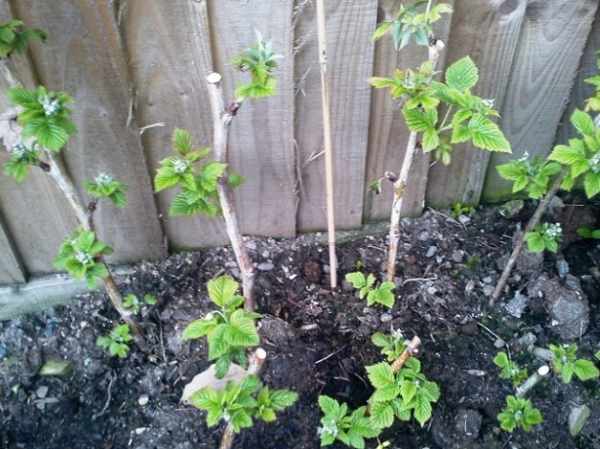

Repaired raspberries are capable of bearing fruit both on two-year-old shoots and on annual ones; they can yield twice a season - the first on last year's shoots, and the second on new shoots.
Pruning remontant raspberries has its own characteristics, it is better to carry out it after the first autumn frosts. All shoots are cut to zero, leaving stumps of 3-5 cm. This way we get rid of all pests living on the shoots and raspberries will winter better under snow or shelter.
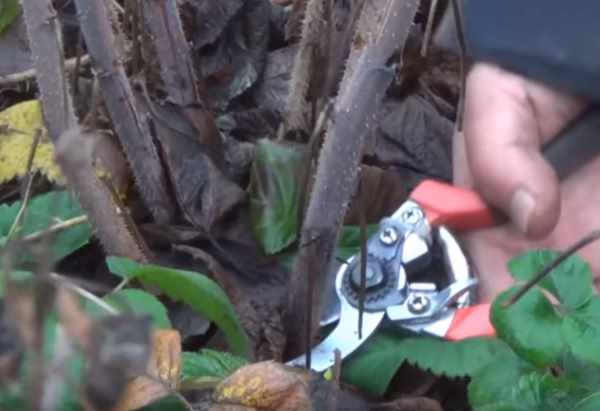

Pruning can be carried out in the spring, but you need to do it before bud break and the beginning of sap flow. But it is better to do the pruning in the fall.
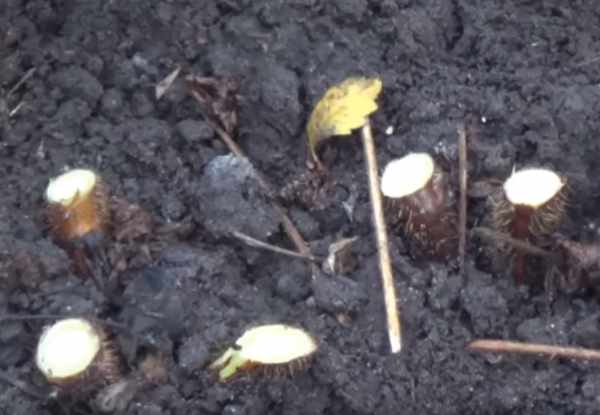

Pinch the tops of two-year-old shoots so that the first fruiting begins a little later. The tops of annual shoots of remontant raspberries are not shortened, since the berry harvest is laid there.
After collecting the first harvest of berries, remove the fruit-bearing shoots for the fastest obtaining of the second harvest.
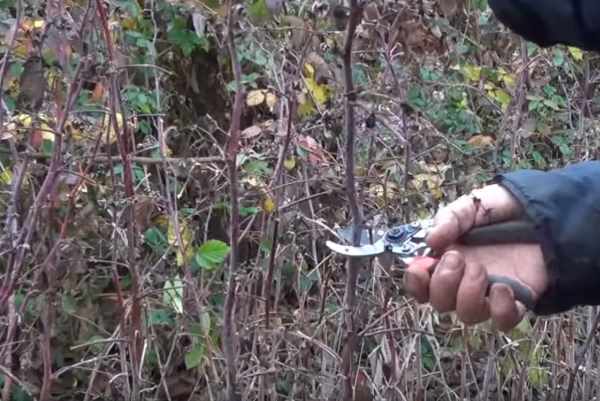

In regions with a short summer, the second raspberry harvest does not have time to ripen; in such areas, grow raspberries as annual plant
.
In this case, the entire ground part of the raspberry is cut off completely, and only annual shoots will bear fruit.
Back to the table of contents
Compliance with the rules when pruning
Growing raspberries according to the Sobolev method and caring for them will give a positive result only if all the rules and recommendations are followed. To prevent the bushes from thickening, you need to start with their correct planting, observing the recommended distances between the bushes.
The rules, the observance of which will help increase the effectiveness of the Sobolev technique:
- observance of the distance between bushes and rows with raspberries, if not, the berry will have to be transplanted;
- one bush should consist of a maximum of 10 shoots;
- the number of branches of replacement and fruitful should decrease gradually - from 10 to 8, from 8 to 6;
In addition to the correct cutting of shoots, the correctness and regularity of further care for raspberries is important:
- moderate feeding with nutrients, you can use both purchased preparations and prepare fertilizer yourself, for example, using humus or manure;
- at the first stage, the length of the branch should be from 60 to 90 cm, not only the bud is cut off, but also at least 8 cm from the length of the shoot;
- watering is moderate, it is better to underfill the water than to overfill the bushes.
Additional Information! The removal of parts of the shoots should be carried out with a sterilized instrument with sharp blades. Any antiseptic or alcohol is used for sterilization. This measure prevents the appearance of various diseases in raspberries.
What varieties of raspberries can be cut using the Sobolev method
As a result of many years of application of the method, it became clear that not all varieties of raspberries are suitable for pruning according to Sobolev. Some species give a lot of lateral shoots without it. Therefore, there is no need to strengthen this process. The Sobolev double pruning method is much more effective, it works on varieties that form few branches.
In addition, to avoid strong root growth, choose raspberry varieties that have virtually no root growth. Otherwise, several bushes will turn into impassable thorny jungles. It is very tedious to constantly cut out thickets.
If, nevertheless, you started pruning raspberries according to the Sobolev method on a raspberry variety that gives a lot of growth, make fences so that the growth does not spread. The offspring can climb out even at a distance of 2-3 m.
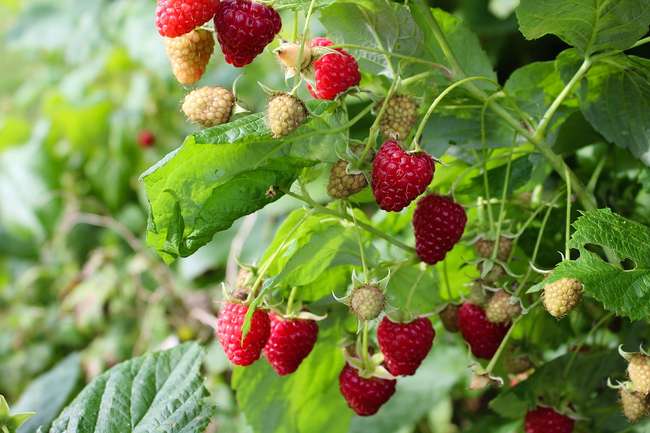

Is the method suitable for remontant varieties?
It is possible to trim raspberries on remontant varieties, but you will have to observe several nuances. The method is suitable for a variety that is grown as a normal summer variety. Prune in the same time frame and in the same sequence as for regular varieties. We recommend an article on what features are in pruning remontant raspberries.
Sobolev's method creates some difficulties for preparing a plant for winter. Overgrown shoots will stick out in different directions from the snowball, they can be damaged by frost. Plus, not all berries on the shoots have time to ripen. Therefore, first twist the raspberry bush into a bun, tie and cover with non-woven fabric or burlap.
Annual branches, which gave one harvest, are not cut at the root, but only the upper 15 cm are removed. They form side branches, which just give a new harvest. But cut off the two-year-old branches.
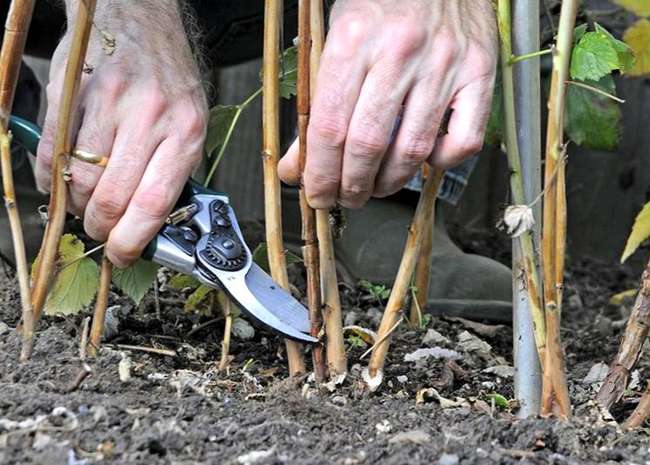

Do not use the Sobolev method on remontant varieties that bear fruit only once. Young side shoots will not have time to grow and get stronger, and the collection of berries will greatly shift to late autumn. In the conditions of central Russia, this will lead to a sharp decrease in yield.
Double pruning of raspberries according to the Sobolev method will not work for such varieties of raspberries as Hercules, Indian Summer, Indian Summer-2.These are raspberry species that grow and bear fruit for only one year.
Sobolev's method - what is the essence?
Despite the fact that the raspberry plant is unpretentious and can grow, almost anywhere, good fruiting is possible only in certain areas and with proper care. Sobolev developed his own agricultural technology and technology for growing crops:
- The plant must be planted in an area that is not subject to waterlogging and stagnation of melt and rainwater. The beds are located in the direction from north to south, or from east to west.
- Plantings with raspberries should be fenced with slate sheets or wooden blocks, raising them above the ground by 12 - 20 centimeters. You can build a wooden box, as for a warm garden bed. This is necessary so that the water flows better to the root system, and does not flow away from the garden.
- A garden bed is made no more than one meter wide. Its length depends on the number of shrubs planted. The distance between the seedlings is about one meter. This is especially important, although many gardeners neglect it to save space. Leaving plenty of space between the bushes can significantly improve lighting and airflow around the plantings, and reduce the risk of disease. Observance of such a distance helps to increase the yield of berries.
- The best period for planting raspberries is early autumn. For each bush, a hole is dug, about forty centimeters deep. When planting several pieces in one hole, the life cycle of the plant is shortened, due to the fact that the seedlings lack nutrients. And subject to the rules of planting and care, the culture is able to grow in one area for more than 15 years.
- After planting, the next season, young shoots appear at the raspberry bushes. For the appearance of each shoot, overgrowth, you need to carry out the first pruning. By mid-June, young shoots should be cut from 80 to 100 centimeters in height. This will prevent the bush from growing in height, it will not bend under the weight of the fruit, and the berries will be easier to pick.
- A year later, in the spring, you will need to carry out a second pruning. Last year's shoots turned into the main stem and several branches extending from it. They should be cut by no more than 12 - 16 centimeters. After such a pruning, more flower stalks are formed on the bush and, therefore, more berries can be set.
- Near last year's plantings, shoots of the current season will reappear. They need to be cut, leaving three to four pieces of the healthiest, with which to carry out the first pruning. You can dig up the strongest shoots and plant them in a new bed, separate from the old bushes. All remaining growth must be cut out.
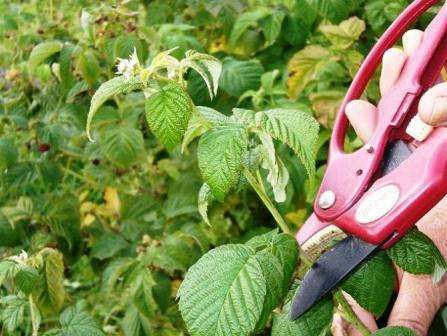

When young and fruiting plants are planted separately, the yield increases significantly, and the fruiting period is lengthened to two months. Thus, in an ordinary variety, the property of a remontant appears. With a similar cultivation of fruiting and young bushes, they are less susceptible to attack by pests.
How to properly trim raspberries in the spring - diagram
Let's consider the procedure step by step:
- The very first step is to remove old branches that have already finished bearing fruit last year. This measure is relevant for those who did not prune raspberries in the fall (in the photo - Fig. A).
- Frozen shoots that have not survived the winter frosts are also subject to removal. They can be identified by their dry appearance and the absence of swollen buds. The pruning height of such shoots is up to the first viable bud (in the photo - fig. B).
- It is also necessary to dig out or cut the young growth at the root. This is done with a pruner or a shovel, undercutting the shoot. It is undesirable to dig in and pull out the shoots, since the root system of the mother and daughter shoots is connected (in the photo - Fig. B).
- Thinning of plantings is carried out. Maximum for 1 sq. m should be no more than 30 copies.This indicator can be corrected in the spring, if something was missed in the fall. One raspberry bush should have 5-6 strong aerial shoots.
- Very long specimens (there are also such) should be shortened so that their height does not exceed 1.5 meters.
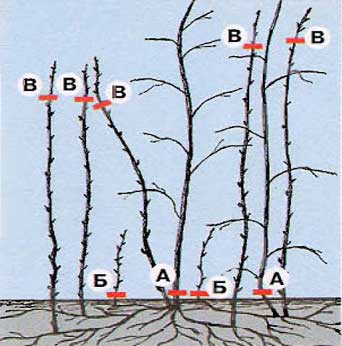

To have a good raspberry harvest, or rather prologue for the whole summer, you can use different heights of raspberry pruning. That is, the shoots of one bush are cut at different heights. At the same time, at first, the berries begin to ripen on higher branches, then on shoots of medium length, and last of all, those branches that were significantly cut in the spring give the crop. This pruning scheme is also applicable for white, black raspberries and blackberries.
Raspberry bushes pruning scheme:
- shorten by 10-15 cm
- shorten by 20-30 cm
- cut off 50% of the shoot
- leave 15-20 cm
Remember to keep your garden pruners sharp and clean at all times.
After spring pruning, there are a few important things to keep in mind, which include:
- Top dressing of raspberry bushes.
- Disinfection of shoots.
- Tying bushes.
- Mulching the soil in the raspberry tree.
- Regular watering (if spring is dry).
As a fertilizer, either ready-made nitrogen, potassium and phosphorus salts, or folk remedies in the form of bird droppings, peat, ash, are suitable.
As for the disinfection of raspberries, ready-made preparations against fungus and insects can also be used for this purpose. You can prepare the remedy yourself. To do this, you need slaked lime (1 liter diluted to "sour cream") and copper sulfate (35 g).
To combat pests of raspberries and other fruit crops in the garden, folk remedies are also suitable. You can read more about them here - you will find a lot of useful information.
The advantages of the technique
I give preference to the Sobolev method, since it increases the number of flower buds, and therefore ovaries. As a result, the period of fruiting increases, the overall yield increases. But the method works only if all agrotechnical methods are correctly applied, including the rules for planting, feeding, watering.
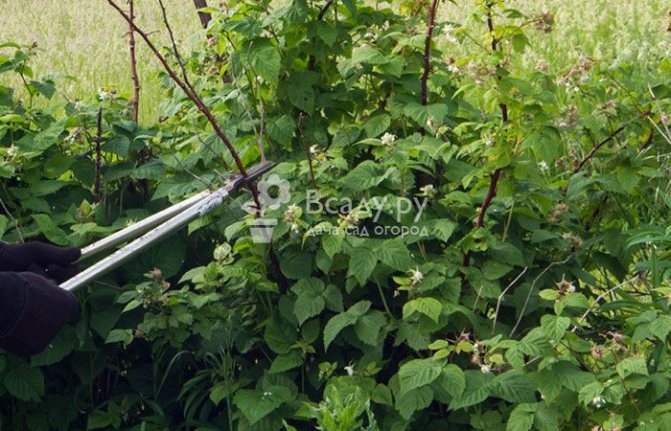

Shortening the raspberry stem promotes the development of lateral processes with ovaries
The primary pruning is preparatory, and the second gives a tangible result if all the rules of the technique are followed. As a result, by the time of fruiting, the shrub resembles a lush tree, covered with flowers and ovaries.
In addition to Sobolev's technique, I use preventive autumn pruning, removing damaged and diseased shoots. If I come across thickened zones in a raspberry tree, I shorten the side shoots again to limit their development.
Regular grooming helps me to give regular raspberries a remontant quality. Pruning according to Sobolev is the best way to create a beautiful fruiting raspberry tree on your site, which will yield a crop until late autumn.
Irina Ivanovna, gardener
Preparing for winter
The raspberries are harvested, what to do then? You need to get rid of mature shoots, and bend the young to the ground, fix them with brackets and cover with any covering material. Spruce branches, dry nut leaves, corn stalks, etc. will keep warm well. But the best natural insulation is snow. If a lot of it falls out, be calm, your raspberries will overwinter well, and with the appearance of heat, they will start up the first leaves. This means that you will get a good harvest of tasty, aromatic, and most importantly - healthy berries.
As you can see, caring for raspberries is not difficult, it is an interesting activity. The most important thing is to do it with love and try to follow all the recommendations of experienced gardeners using the Sobolev method.

